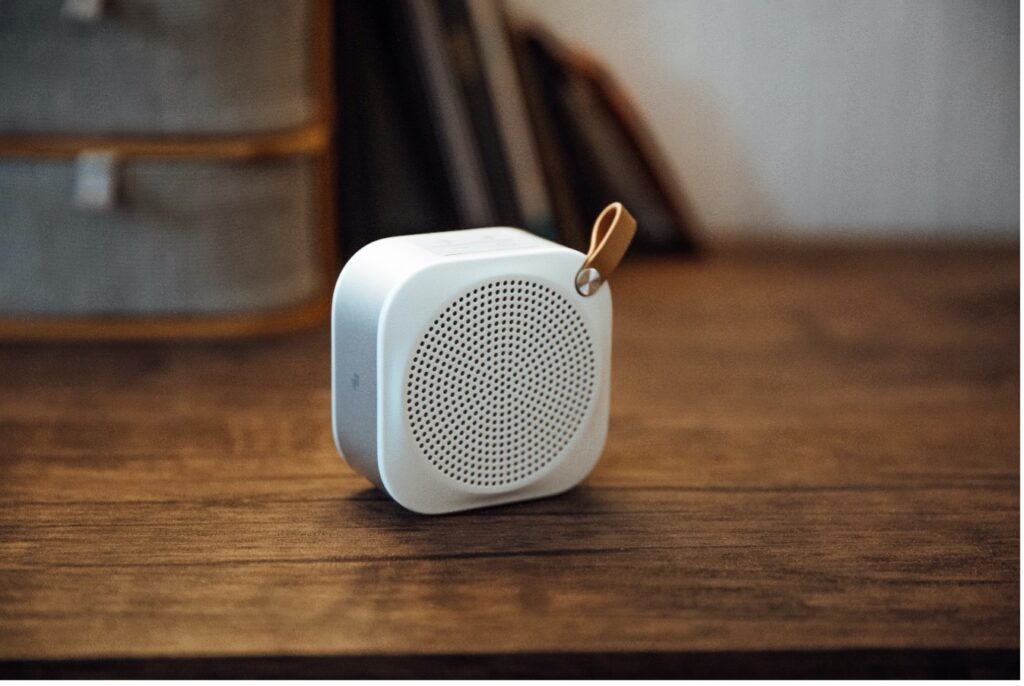
One of the biggest lessons I have learned about achieving a home birth personally and as I have supported women during their birthing experiences is the process of surrendering to each stage of birth and flowing with your body through each step of the way.
Birth is all over the place, at one moment you could be in the shower, and in the next 5 minutes it may feel better to be on all fours on the floor and this is the prime example of utilizing comfort techniques!
By preparing and learning different comfort measures to accommodate you during labor can make all the difference in your experience!
There is no right or wrong or one way when it comes to using the comfort techniques I am going to share with you in this post. The most important thing to take away from this post is to become informed and aware of the many options you have when it comes to coping with your labor.
By exploring, and implementing different ways to move about during your labor really gives you a chance to connect and work with the laboring process, and to be a part of it. Instead of labor being something that’s happening to you, it will feel like it’s happening through you!
Yesss!! I know birth can be sooo beautiful, especially when you think of it like that and change your mindset around it… which leads me to the first one…
1.Mental
Birth is such heavy energy. It requires a lot more than just our physical. Mentally preparing ourselves can reduce negative, and fearful stories we tell ourselves. This can make you not be able to fully be at ease walking into your birthing experience. Between fear, doubts, not trusting your body, or process can create tension. Making it harder to to truly release and unwind.
Instead, feed your mind with positive thoughts around birth, positive self-talk, and inform yourself. This way you can walk into this birth with confidence.
Some things you can to do prepare yourself mentally is:
- Address any fears you have prior to your birth and take time to talk about them with someone, educate yourself around this topic.
- Watch home births, natural births to affirm and inspire you as you prepare for your own home birth.
- Normalizing birth and becoming informed by listening to Podcast, blogs, videos, courses, workbooks, etc.
- Having a positive support team who trust your decision and uplift you on your journey
- Journaling
- Yoga
- Meditation
Your mentality is huge in this process! If all else fails, if no other birthing techniques work out for you, preparing your mind around birth is vital.
I have a full post here on 6 ways to prepare mentally for your home birth and it goes over this in more debt.

2. Environment
Choosing where you want to birth plays such a huge role in the overall birth experience. Choosing to have a home birth already eliminated some of the stress of birthing in an unfamiliar environment.
But what about your birthing space at home, how do you want that to feel?
Some questions to ask yourself are:
Who do you want to be at your birth?
How do you want the space to feel? Dim lights, fairy lights, an open space, candles, etc?
Is there any preparation that you want to do to your house before your birth like maybe move some things around in a certain way? Clean out a room? Create more open space in the living room?
Do you want a birth pool? Birth ball? Music?
One of the many benefits of birthing at home is have the ability to adjust your home how you want your birthing space to feel.

3.Birth Team
Make sure that everyone at your birth is on the same page as you. Aligned with your vision, and fully supportive of the birthing process. Having family, friends, and sometimes even you’re doula or midwife that you don’t vibe with, can change your birthing experience you want to have.
Family members, friends who are creating fear in the birth space can distract you from fully focus in the birth process.
4.Breathing
Becoming aware of your breath during labor can help you prepare for breathing through contractions. Breathing is a great way to cope with labor. As your contractions begin to get stronger, focusing in on your breath and breathing out all the tension that builds in your body during labor can be relieving.
Learning and utilizing breathing techniques can be beneficial by:
- Providing something to focus on and calm you through contractions
- Helping with relaxation
- Providing oxygen to your muscles to reduce pain and oxygen to your baby
- Creates a specific rhythm to turn to, follow and serve as a distraction during contractions
Breathing techniques
Slow breathing
Slow breathing during labor can help calm you by using your breath as a rhythm to focus on. This allows your body to release any tension you are hanging on to through each breath. This breathing technique could be beneficial in the beginning stages of labor.
How to slow breath during labor:
- As soon as contraction begins, begin taking a deep inhale and gently exhaling it out.
- When you take in that deep breath, hold it for a few seconds before exhaling out. Breath in through your nose and exhale out your mouth.
- Allow your focus to follow your breath.
- Allow your body, shoulders, chest, belly to be relaxed when taking the exhale.
Light Breathing:
Light breathing helps manage your labor when you are no longer able to relax during contractions. As contractions begin to get stronger and closer together, changing up the rhythm to light breathing may fit this part of labor better.
How to light breath during labor:
- As soon as contraction begins, take a light breath in and exhale quickly releasing any tension.
- Focus on your breath.
- Take light, short breaths, inhaling and exhaling through your mouth.
- Keep your inhale quietly to prevent hyperventilating
- Allow your body, shoulders, chest, and belly to relax and continue this breathing throughout the contraction.
Vocal Breathing
Vocal breathing is adding a sigh, moan, chant, song, affirmation to your breathing technique. This can help release tension as well. Many times moms worry about screaming and making sounds, when your voice is very well a part of the birthing process, letting out anything that you feel can release so much tension that you have within! Please channel all your emotions and express them.
3. Find your rhythm
This is the same concept as using breathing techniques.
Finding a rhythm to flow to when each contraction comes.
For example, leaning over a bed and rocking your hips back and forth through contractions until the contraction is over. Relax until the next one comes in and pick back up to that rhythm on your next contraction.
A great time to start practicing and establishing your rhythm is in the early stages of labor when your contractions are not that strong and close together. So that way by the time you get into the active stage of labor when things are picking up, you have established a space that you can go to and focus within yourself during contractions.

5. Movement and position
Moving and changing positions during labor can help labor progress by using gravity, opening the hips and movements to rotate baby down.
It also can make getting through your contractions more comfortable when you’re in positions that accommodate your body better and you can move the way you want!
Dancing, walking, swaying, stairs, these are all things that can be added to your ritual for coping with your contractions. Instead of sitting through each contraction, you can move with each contraction. Once again allowing your body to fully engage and be guided by labor.
Different positions that may be helpful are :
- Kneeling over something like a bed, birth ball, chair, etc.
- Standing and leaning over someone with your hands wrapped around their neck or hanging by your side as they hold you
- Sitting backward on a chair, toilet
- Squatting, Lunges. Childs pose
- Hands and knees
- Side-lying with a pillow between your knees
- Slow dancing and walking
- Inversions. Leaning forward on a couch, keeping your hips lifted above you head and elbows holding you on the ground.
- Using a rebozo
- Birth ball

6. Baths, showers, birth pools
Having access to a bath, birth pool or shower can be very relaxing and calming during labor. Warm water can be soothing and help relieve labor pains. Some things you can do are:
- Kneeling and leaning over tub/pool with your legs open to open your hips
- Lying on your back or prompt up with a towel to support your head
- Turning the shower on and letting the water hit your back, stomach, wherever your pain is at the time. If the showerhead detaches that’s even better!
- Having your partner sit behind you in the tub as you rest your back on them
Make sure that your bath/pool water is 98 to 99 degrees ( Normal body temperature). Also, water is not for everyone during labor so if you find yourself hopping in some water and it just doesn’t feel right, listen to yourself and try something different.
For me personally, when having my daughter sitting in a tub was the last thing that I found comfortable, but I also have seen women benefit a lot from using showers and pools at their birth!

7. Touch and Massage
Having touch and massage from a partner can be comforting and reassuring to know that someone is there with you right by your side. Touch also promotes oxytocin to flow, the number one hormone needed in labor to help with contractions, relaxation, feeling calm, etc.
Touch and massage can be:
- rubbing your back
- holding your hand
- rubbing your feet
- shoulder massage, back massage, hip massage, etc.
- Hip Squeeze
- Using massage tools or a tennis ball to roll back and forth on the lower back
Having oils, and lotions close by can be helpful with making massage against your skin feel more smooth.
Your partner also can become involved and more connected with the laboring process and you through touch and massage.
For example, it could be very helpful to have your partner or whoever is supporting you through your birth to rub your back, shoulders, feet, hugs, etc through each contraction. This provides a rhythm and ritual to follow, something to focus on and comfort.
8.Food and staying hydrated!
Food
This may sound like it’s not a big deal but having snacks, water, and drinks on hand during labor can make a huge difference for you. In those deep hours of labor when you’ve been at it for a while and are slowly losing your energy, food and water can be very comforting and also needed!
You are burning so much energy during labor, feeding your body during labor can help restore some energy for you to keep going. Having quick snacks available and also eating when labor first begins so that you can start off energized and then continue to feed your body throughout the process as you become tired.
Finding snacks that are easy to eat, high in carbs and protein to restore your energy quickly.
Some good snacks that are good for this are :
- Energy or granola bars
- Fruits
- Crackers
- Oatmeal
- Honey stocks
- Yogurt
- Nuts and Seeds
- Applesauce squeeze pouches or fruit squeeze pouches found in the produce section at the store
- Almond butter/peanut butter pouches
Some Specific foods/brands that you can find either at the store, a local health food store or amazon are:
NOKA superfood smoothie pouches- These are 100% organic fruit blended into a pure blended together with a variety of superfoods and 5g protein in small squeeze pouches making them quick and easy to eat while laboring.
Clif bars- Planted based protein bar that has protein, carbs, oats, almonds, peanut butter etc. Also quick and easy to eat.
Justin’s Classic Almond Butter- Quick and easy small pouch of organic almond butter, would go good with sliced apples on the size
Nature’s Path Organic oatmeal cups or The Red Mill organic oatmeal cup- Quick and easy to make, full of nutrients. Depending on the flavor you get, it can even come with flaxseeds and chia seeds which are great sources of protein.

Water/fluids
Staying hydrated helps with the overall flow of your contractions and helps your contractions continue to work more effectively. Also with all the breathing and work you are doing, your mouth gets very dry and that can be uncomfortable and distracting!
Having a close by a big water jug of ice water, natural juice or drink low in sugar and artificial flavorings ,a smoothie are nice options to have available during labor. Investing in a big water bottle, like a Bubba (I love these) could be great for your birth.
Other drinks and sources that can help with hydration:
- Big gallon water bottle with ice water
- Coconut water is great for hydration because of all the electrolytes it naturally has
- A natural juice
- A sports or energy drink, natural flavoring
- Popsicles
- Ice cubes

9. Hot/cold pads and towels
Towels
Having extra towels around during birth is a must because birth has all kinds of messes along the way and not only that but towels can be used for so many different things like providing heat for comfort or providing cold to cool you down!
Have towels ready to pour hot water over and apply over where you feel tension to help relieve labor pain. You can also use towels to run cold water over and place over your shoulder, forehead, back, or wherever on your body when you are hot and need to cool down!
Hot/cold pads
Heat and cold can be applied to areas you are having pain, for example, your lower back, and either a hot or cold pad can help relieve some of the pain you are feeling in a specific area.
Some options you can use for heating/cold pads are :
- Electric heating pad
- A hot water bottle
- A sock filled with rice or grain and can be heated in the microwave
- Ice packs
- Bags of ice

10.Music
It’s a vibe!
Having music during your labor can change the way your birthing space feels, creating a more comfortable vibe for you. Finding music that puts you in a meditative state, finding music that makes you want to get up and dance, or finding music that motivates you and empowers you.
It’s whatever feels good to you at the time, maybe making a couple of playlists could be helpful so you can choose which feels best at the time!
Listening to music can create such a customizable feel in your birth space, along with other benefits like
- Allowing you to feel calmer and at ease which helps with relieving pain
- Can get you moving, dancing, rocking, promoting movement
- Can be a form of focus and distraction during contractions
- It can be soothing
- Helping with your mood
- It may help you tune other background noise out and get in a zone to focus on contractions
- Moaning, humming, singing to music can be grounding during labor
11. Visual focus
Visualization can be a great way to distract yourself during contractions and focus on something that’s going to distract you but at the same time work with your contractions. Visualization could be visualizing a movement, a specific place, a picture, etc. Finding something to look at and in a way allows you to go somewhere else in your mind during contractions.
For example, one of my very first births, I helped a momma throughout her whole labor with visualization. When I arrived at the birth, and slowly joined her side, I noticed she was doing a circular movement with her hand during each contraction and it seemed like it was working for her.
So on her next couple of contractions, as she got off track with this movement that was helping her get through, I began doing the same circular motion with my hands and she followed my hands with her eyes, along with deep breaths for each contraction for the rest of her laboring process!
A Lot of the birthing process is all in your mind!
12. Chanting and affirmation
Use your voice, it’s powerful!
Chanting during contractions, focusing on a specific chant during each contraction peak could help a lot with the intensity of the contraction and something to focus and distract you. For example: During each contraction as it comes in, chanting could sound like:” ME AND MY BABY CAN DO THIS! ME AND MY BABY CAN DO THIS! ME AND MY BABY CAN DO THIS! And as the contraction fades away, you may rest and wait until the next contraction and start back up again.
Words of affirmation can be very helpful as well, speaking into existence what you want to feel and see, training your mind and body to flow with the words you affirm for yourself.
Affirming yourself with affirmations before your birth can also be very beneficial to your confidence and response to labor.
Words of affirmation for labor (these can be chants as well):
- I am safe
- I soften. I open. I release.
- I can do this. I will do this. I am doing this.
- Each wave brings me closer to my baby
- I trust my instincts
- I trust my body and baby
- I have everything within me to birth my baby
- I am made to do this
- I am flowing with each wave
- Breath it out
I’ve made affirmation cards with these 10 affirmations, click here and get your FREE Intuitive birth affirmation cards!

13. Childbirth Classes
There are all kinds of childbirth education classes, some that go into specific techniques to help with labor such as rebozo, spinning babies, HypnoBirthing etc. When looking for a childbirth class, make sure to keep your vision for your birth and center what is most important to you when choosing a class. Finding a class that resonates with your beliefs and the birth you want to have.
Childbirth classes can be a great way to learn hands-on and become informed about the birthing process, engage your partner in how he can best support you during labor, and find community.
14. Solitude
Sometimes the best relaxation that happens, the most progress that happens, and what feels best is being alone.
When I was laboring with my daughter, all while I was laboring, my husband was resting and waiting for the birth of our daughter, and if I needed him he was right there, sometimes without me even having to call. But for the most part, I labored alone which allowed me to gain a clearer focus, go within and listen to my body.
15.Rest
There may come a point in labor where you are just exhausted and beyond a granola bar or honey stick, you honestly just need rest, do so! While moving around during labor can help push things along, if you don’t have the energy and feel the urge to lay down and rest, listen to your body and take some time to re-energize.

16. Essential Oils
Essential oils have many different properties and can be beneficial in your birthing space. Essential oils help with nausea, anxiety, and stress, which oftentimes could be experienced during birth. They also can create a calming birthing environment, promoting relaxation.
You can use essential oils in a few ways, diffuse, inhaling, and smelling it or mixing it in with natural oil and applying it to your skin.
Here are some commonly used essential oils that are safe for labor and birth with a brief description:
- Clary Sage-Has properties that help balance your cortisol, a stress hormone. This oil can reduce stress and promote more relaxation in the process.
- Lavender- Very commonly used for reducing pain, stress, and anxiety. This can be used to help soothe you, during labor and after.
- Lemon- The zesty, fruity smell of lemons has helped with uplifting your mood and also can help with nausea.
- Mint- This oil here has a few benefits such as circulating your blood, reducing nausea, and can create a boost of energy and focus. Also, there is menthol in mint which is a good alternative for pain management when diluted with oil and applied to the skin because of the cool soothing sensation menthol provides when on the skin.
- Geranium helps with a mental and physical focus
As you can see there are many different ways to cope with your pain during labor, most of them being very simple and accessible to use.
Utilizing different comfort measures as you’re in labor like I mentioned in the beginning really allows you to get in the flow of birth, become more in tune with each contraction and it helps you to work with the birthing process which can feel so empowering and you can learn so much!
I know that there is so much information out there and so much to learn going into your home birth but also keep in mind that when we truly surrender to the process of labor and listen in to what our body needs, a lot of these comfort techniques will come naturally to you!
Until next time,
Stay tuned, in tune, and forever evolving
Source to support some of this content from this post :
Pregnancy, Childbirth and The newborn (4th addition): The Complete Guide
Stephanie



Leave a Reply